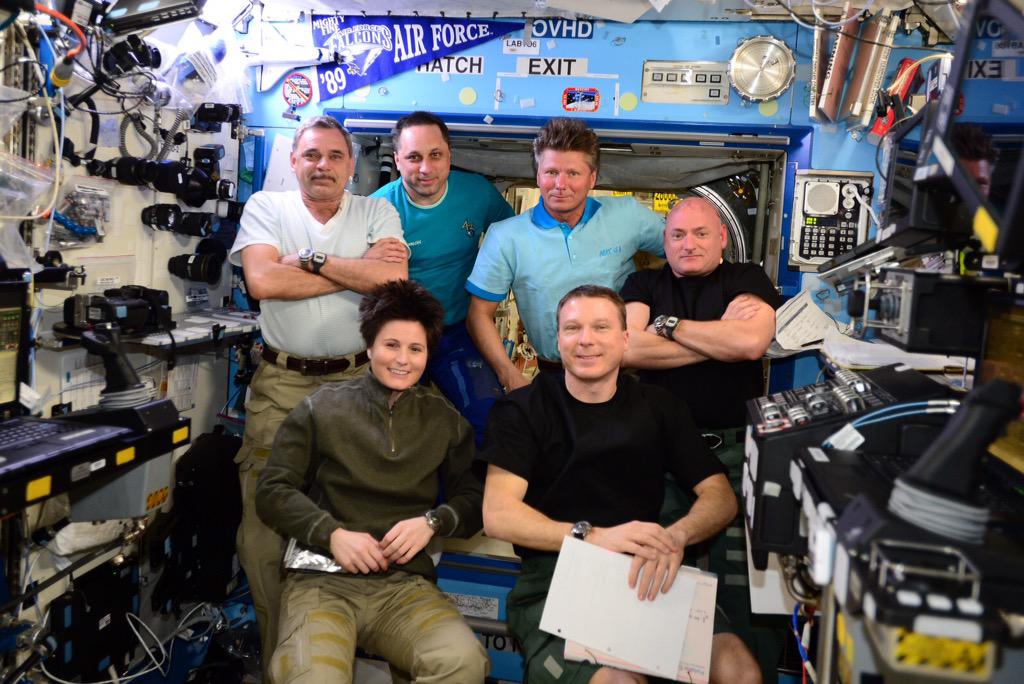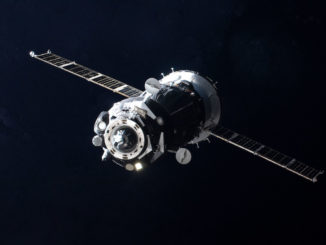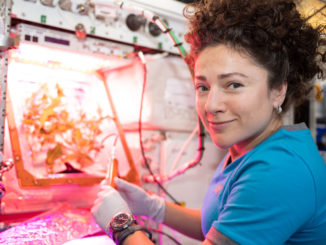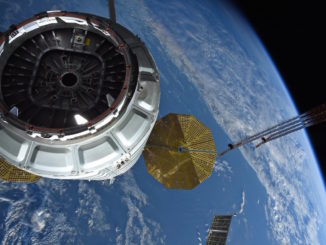STORY WRITTEN FOR CBS NEWS “SPACE PLACE” & USED WITH PERMISSION

Astronaut Scott Kelly, settling in aboard the International Space Station for a marathon 342-day stay in orbit, said Monday he is looking forward to serving as a test subject for medical research on the long-duration effects of weightlessness, data he said would help pave the way for eventual flights to Mars.
Video chatting with NASA Administrator Charles Bolden, Kelly, veteran of a 159-day station visit in 2011, said “it’s great to be up here, a great rocket launch to space and then the rendezvous to the space station, it’s like coming to my old home.”
“It’s going to be a lot of work,” he said, floating in the roomy Japanese Kibo module, “but I really look forward to the privilege of serving NASA and our nation,” he said.
Kelly, Korinenko and Soyuz TMA-16M commander Gennady Padalka were launched Friday from the Baikonur Cosmodrome in Kazakhstan, docking with the International Space Station six hours later. They were welcomed aboard by Expedition 43 commander Terry Virts, cosmonaut Anton Shkaplerov and European Space Agency astronaut Samantha Cristoforetti.
Throughout their nearly yearlong stay in space, Kelly and Kornienko will participate in a wide variety of experiments to study the effects of prolonged weightlessness on the human body as well as the psychological impact of a long-duration stay in a confined space away from family and friends.
Four Russian cosmonauts logged flights aboard the Mir space station lasting between 366 to 438 days, but the last such mission ended in the 1990s. Using state-of-the-art instruments and protocols, Kelly and Kornienko hope to provide unprecedented data to help researchers mitigate any potentially harmful effects before eventual flights beyond low-Earth orbit.
“This is a really important step on our road to Mars,” Bolden told Kelly. “We’re excited about having you and Mikhail there as partners and excited about seeing all the things you’re going to do.”
John Holdren, the presidential science advisor and director of the White House Office of Science and Technology Policy, congratulated Kelly on the successful launching.
“All of us wish you the best of luck in this unprecedented yearlong mission,” he said. “We’re watching you with enormous interest, not least because this mission is bringing us scientific information that only a prolonged stay on the International Space Station can provide … as we work toward the president’s goal of sending humans to Mars in the mid 2030s.”
Kelly thanked Holdren for his interest, saying “I really appreciate the First Lady and the president’s attention to NASA.”
“The amount of work and science up here we can get done in all different kinds of disciplines … is very important,” Kelly replied. “Hopefully, the current crews and previous crews and future crews, not just Misha (Kornienko) and myself, will be furthering our goals to put humans on Mars some day.”
Along with collecting medical data, Kelly and Kornienko will be on board throughout the most significant space station reconfiguration since the shuttle’s retirement in 2011.
Over the coming months, multiple station crews will work to equip the lab with docking adapters and other upgrades to permit new commercial crew ferry ships being built by Boeing and SpaceX to dock with the station starting in 2017. The new crew capsules will allow NASA to add an additional crew member, doubling the time available for science.
During their stay aboard the station, Kelly and Kornienko will serve with four crews, starting with Expedition 43. Virts, Shkaplerov and Cristoforetti plan to return to Earth in May aboard their Soyuz TMA-15M spacecraft, leaving Padalka in command of the Expedition 44 crew.
Three fresh crew members — Soyuz TMA-17M commander Oleg Kononenko, NASA astronaut Kjell Lindgren and Japanese astronaut Kimiya Yui — will join the ISS-44 crew at the end of May.
On Sept. 1, Soyuz TMA-18M commander Sergey Volkov will launch with two short-duration crew members: European space agency astronaut Andreas Mogenesen and British pop diva Sarah Brightman, the tenth “space tourist” to visit the lab and the first since 2009.
Volkov will remain aboard the station as part of the Expedition 45 crew, commanded by Kelly, but Brightman and Mogensen will return to Earth after a 10-day visit, along with Padalka, aboard the Soyuz TMA-16M spacecraft. At landing, Padalka will have logged 878 days in space during five missions, making him the most experienced spaceman in the world.
In November, Kononenko, Lindgren and Yui will come back to Earth, leaving Kelly, Kornienko and Volkov as the core members of Expedition 46. Later that month, Soyuz TMA-19M commander Yuri Malenchenko, NASA astronaut Timothy Kopra and ESA astronaut Tim Peake will join them, boosting the crew back to six.
Finally, on March 3, 2016, Volkov will bring Kelly and Kornienko back to Earth aboard the Soyuz TMA-18M spacecraft, closing out a marathon 342-day mission.
Throughout the “Year-long Mission,” Kelly’s twin brother, Mark, a four-flight shuttle veteran who is now retired from NASA, will participate in many of the same experiments on the ground, serving as a “control” to provide comparative data.
“This twin study is going to give us, hopefully, information on what we need to one day go to Mars,” Mark Kelly told Bolden in the video conference. “We understand a lot about the engineering of a Mars flight, what it would take to get people there and get them back. But we don’t understand a lot about the physiology.”
The data are important, he said, “because if we are going to send people to Mars one day, it’s not going to be a one-year flight. It’ll probably be more than two years, and there’s a lot to learn there.”
“So I’m thankful to be part of this,” he said. “I’m behind my brother Scott 100 percent as he spends a year in space. That’s a big, big challenge that I know he didn’t take lightly.”



